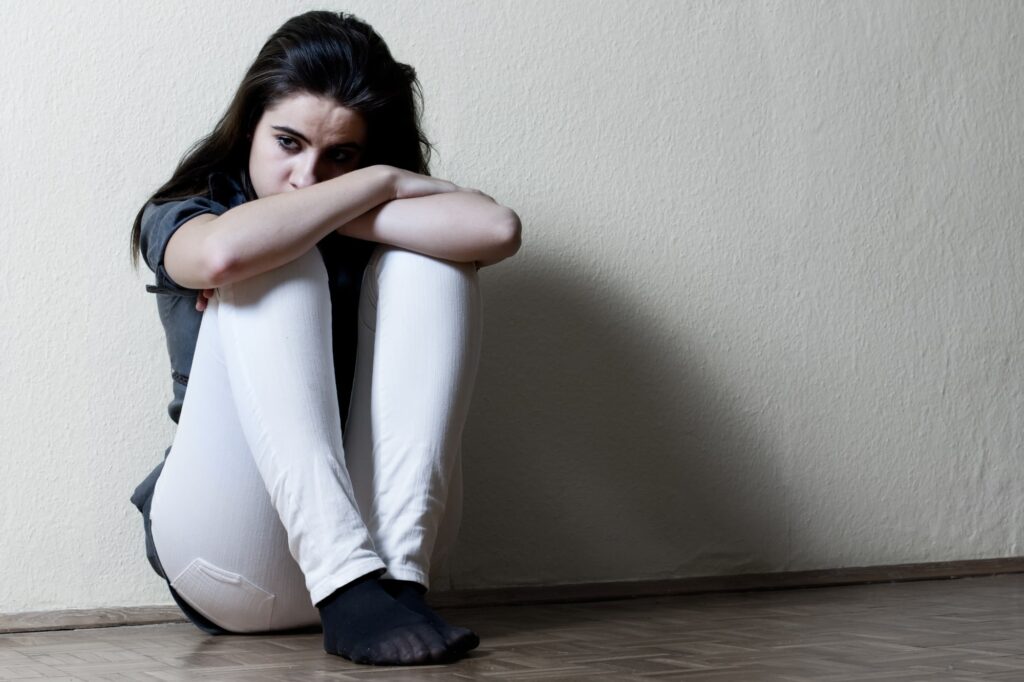Nearly 3% of Americans are affected by bipolar disorder, according to data from the National Institute of Mental Health. Dramatic mood episodes from manic highs to depressive lows characterize this serious mental illness, which was formerly known as manic depressive disorder.
People with bipolar disorder have a much higher risk of completed and attempted suicide than those who don’t have this condition — even higher than people who have other mental health conditions. If you or a loved one has been diagnosed, this guide on bipolar suicide rates will help you understand the correlation between bipolar disorder and suicide risk so you can take steps to stay safe.
If you or a loved one need help now please call (866) 305-7134 or use your insurance to start treatment today.
Bipolar Suicide Rates
 Most clinical research shows that bipolar suicide rates are significantly higher than average for the general population. A study published in the International Journal of Bipolar Disorders says people with bipolar disorder are about 20 times more likely to commit suicide than people who don’t have a mental health diagnosis. They’re also at higher risk than people with other personality disorders and mental disorders.
Most clinical research shows that bipolar suicide rates are significantly higher than average for the general population. A study published in the International Journal of Bipolar Disorders says people with bipolar disorder are about 20 times more likely to commit suicide than people who don’t have a mental health diagnosis. They’re also at higher risk than people with other personality disorders and mental disorders.
The journal Frontiers in Psychiatry reports that about 20% of people who have bipolar disorder die by suicide. Approximately another 20% to 50% of those with this diagnosis have at least one previous suicide attempt.
Factors That Increase Mental Illness Suicide Risk
The National Alliance on Mental Illness reports that these factors may contribute to the high risk of suicide for people with bipolar disorder.
Delayed or Inaccurate Diagnosis
Untreated bipolar disorder represents one of the biggest risk factors for suicide. The average person who has bipolar disorder waits about 6 to 8 years to receive an accurate diagnosis and begin treatment. The Journal of the American Association of Nurse Practitioners indicates that about half of people with bipolar disorder initially receive a diagnosis of major depression. Only 20% of individuals with bipolar disorder get a diagnosis within 12 months of first reporting their symptoms.
Length of Depressive Episodes
While mania tends to be relatively short in duration, depression can persist anywhere from several months to several years. The IJBD study cited above reports a strong correlation between the length of time spent depressed and the risk of suicide with bipolar disorder. For example, people who have bipolar II disorder may only experience one manic episode in their lifetime, compared to the more rapid cycling experienced by patients diagnosed with bipolar I. Their longer periods of depression increase the risk that they’ll attempt suicide.
Lack of Attention to Depressive Episodes
Many bipolar patients and their caregivers pay more mind to the potential dangers associated with manic episodes when depression actually tends to be more severe and lasts longer in most bipolar cases. This risk factor is important because suicidal ideation and attempts of suicide occur more often during depressive episodes. In addition, many people with bipolar disorder display suicidal behavior in response to incidents that occurred during the manic phase of the disease. The IJBD study found a higher risk of suicide among people with mixed (agitated-dysphoric) forms of the disorder.
Challenges to Treat Bipolar Disorder
Effectively treating bipolar disorder presents challenges for treatment providers, particularly associated with addressing both mania and depression. Sometimes, sedatives prescribed to control manic phases can actually make depression symptoms worse, which increases the risk of a suicide attempt.
Trauma Associated With Psychiatric Hospitalization
NAMI notes that people with bipolar disorder have a much higher hospitalization rate than those with other mental health conditions. After spending time in the hospital for psychiatric treatment, many patients experience suicidal ideation. In fact, the journal JAMA Psychiatry reports a suicide risk up to 100 times higher than the risk in the general population for the first 3 months after discharge from a hospital stay for mental health. This risk increases to up to 200 times higher than the general population for people who entered the hospital with suicidal behavior or thoughts. Even many years after discharge, people who have a previous mental health hospitalization still have a suicide rate of about 30 times higher than the average global rate.
Age of Onset of Bipolar Disorder
The Journal of Psychiatric Research cites early age at the onset of bipolar disorder as another of the risk factors for suicide. People who were younger than 18 when they started showing symptoms of bipolar disorder are much more likely to attempt suicide or die by suicide. They also tend to have more severe forms of the illness, and they’re more likely to also have other mental health issues and/or cope through substance abuse than their older counterparts.
Suicide Prevention With Bipolar Affective Disorder
 Comprehensive treatment for bipolar disorders can help reduce the risk of suicide attempts and fatalities among this group. Most treatment providers recommend combined clinical therapy and medication, along with a strong support system that creates a sense of stability.
Comprehensive treatment for bipolar disorders can help reduce the risk of suicide attempts and fatalities among this group. Most treatment providers recommend combined clinical therapy and medication, along with a strong support system that creates a sense of stability.
Common medications for bipolar disorder treatment include:
- Antidepressants when depressive episodes arise
- Atypical antipsychotics
- Drugs such as lithium that stabilize mood
- Drugs to treat symptoms such as anxiety and insomnia
Many people with bipolar disorder have to try more than one medication before they find an effective combination of drugs for their symptoms.
In addition to medication, therapy can help individuals with bipolar disorder cope with symptoms and stick to treatment regimens. Several kinds of therapy such as EMDR therapy, Experiential therapy, DBT and CBT have been found effective for bipolar disorder treatment, including cognitive behavioral therapy and other forms of talk therapy, interpersonal therapy and family therapy.
Lifestyle changes can also help people with bipolar disorder manage their symptoms and reduce risk factors for suicide. Examples of helpful changes include a regular sleep schedule with at least 8 hours per night, a regular exercise routine and a nutritious diet with a variety of healthy foods.
Visit your healthcare provider if you experience symptoms associated with mood disorders like bipolar. Obtaining an accurate diagnosis can improve treatment outcomes, which in turn reduces the risk of attempted suicide. If you or a loved one has been thinking about suicide or attempted to commit self-harm, you should call 911 for immediate medical attention or contact the suicide helpline at 988.


